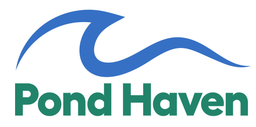
Discovering tiny red worms in water supplies can be an unsettling experience for anyone. Often identified as bloodworms, these small larvae usually belong to the midge fly species, known scientifically as Chironomidae. Bloodworms thrive in aquatic environments and are typic...
Read more
Goldfish and koi are often admired for their beauty and grace in aquatic settings, sparking interest in their compatibility as pond-mates. When considering whether these two popular species can live together, it is essential to account for their environmental needs and the ...
Read more
Managing leeches in ponds is an important aspect of maintaining a balanced aquatic ecosystem. Leeches, often vilified for their parasitic nature, can sometimes play a positive role by controlling the population of other small invertebrates or providing food for fish. Howeve...
Read more
Koi spawning is a significant event for both natural ecosystems and koi enthusiasts, typically occurring once a year during the spring and early summer months. Environmental factors play a crucial role, with water temperature being a primary trigger for the spawning process...
Read more
Maintaining the right pH balance in pond water is essential for the health of fish and other aquatic life. The term 'pH' is a measure of the acidity or alkalinity of water on a scale ranging from 0 to 14, with 7 being neutral. For ponds, an ideal pH ra...
Read more
Controlling the mosquito population around ponds is a crucial aspect of maintaining a comfortable and healthy outdoor environment. Mosquitoes are not only a nuisance but can also be potential carriers of diseases, making it imperative to address their breeding and habitatio...
Read more
Anchor worms are parasitic crustaceans that primarily infect freshwater fish. Despite their common name, these organisms are not worms but belong to the copepod family. These parasites are visible to the naked eye and appear as small, white, thread-lik...
Read more
Pond dye serves both aesthetic and functional purposes in the management of aquatic environments. These dyes come in a variety of colors such as bright blue, dark blue, blue-green, blue-black, and pure black. The primary benefit of incorporating dye in...
Read more
The life cycle of a bullfrog, a common amphibian found throughout North America, is a fascinating journey that spans from egg to mature adult. This process is a remarkable transformation that showcases the adaptive strategies of amphibians. Bullfrogs begin their life cycle ...
Read more
Koi fish, with their vibrant colors and elegant movements, are a popular choice for outdoor ponds and water gardens. Originating from Japan, these ornamental versions of the common carp can vary widely in size. The growth of koi fish is influenced by a variety of factors in...
Read more